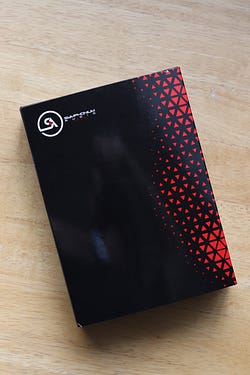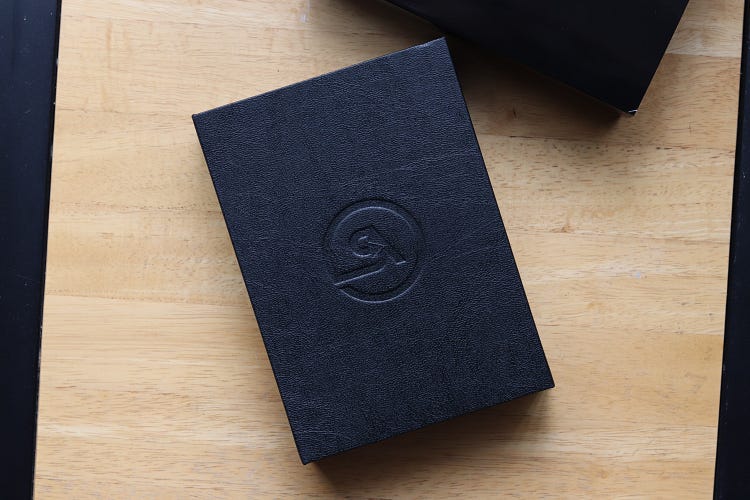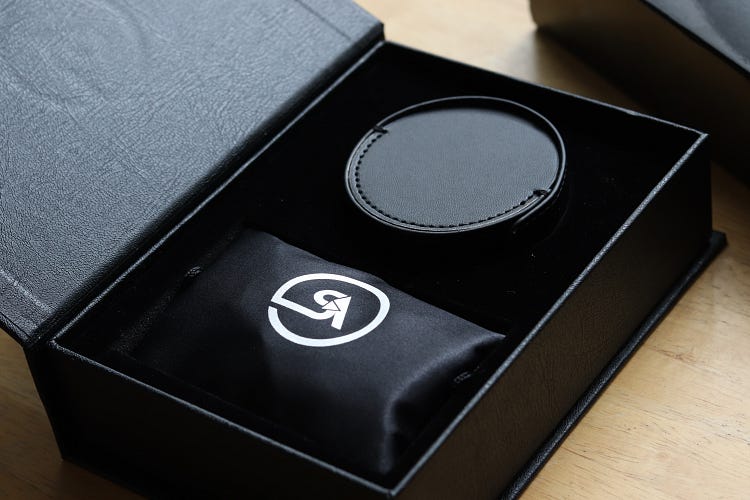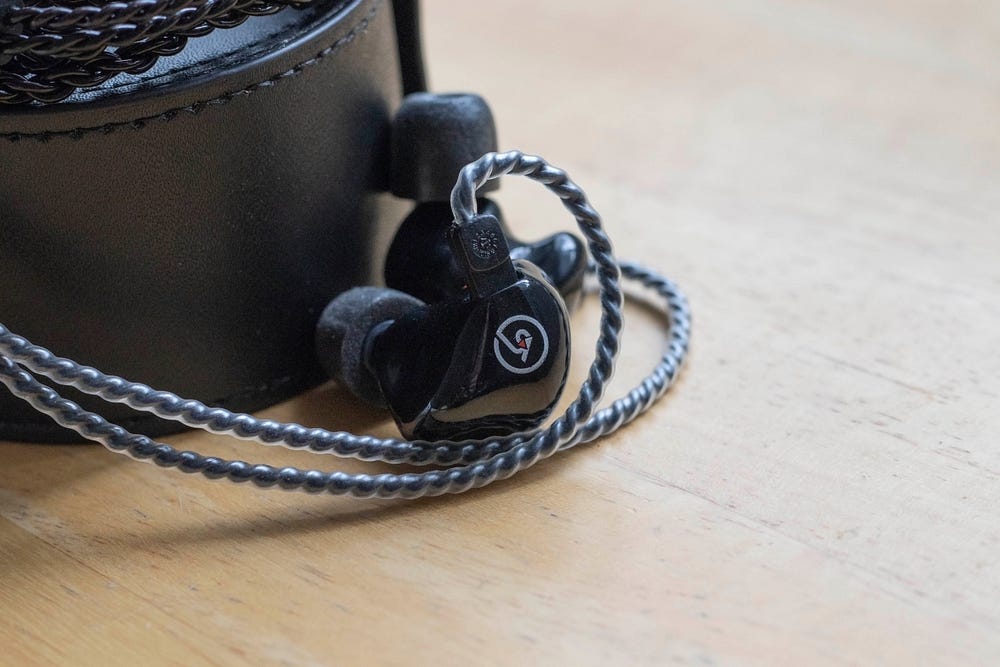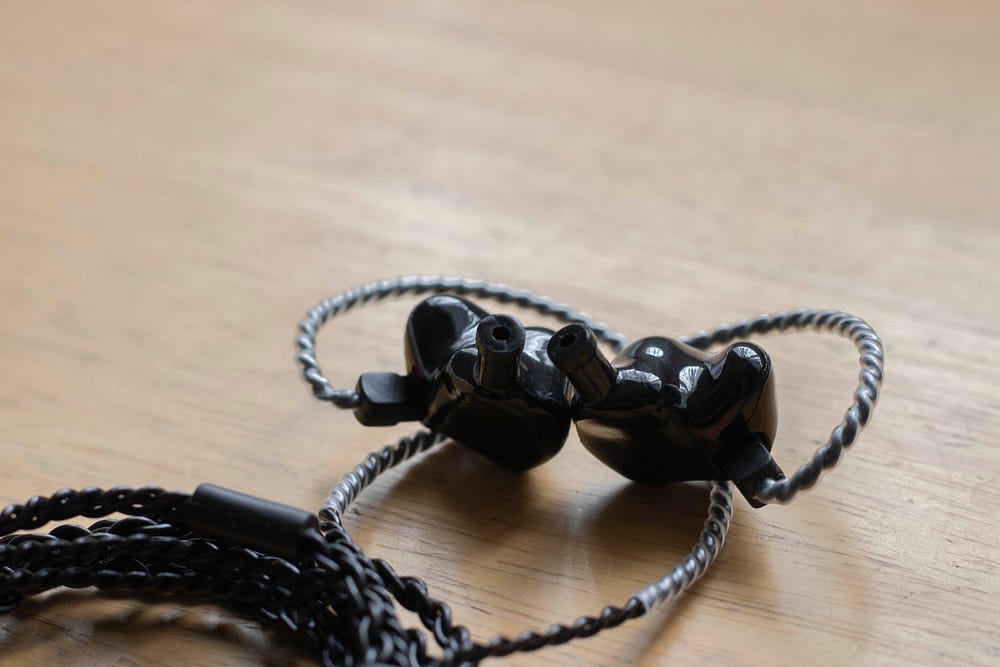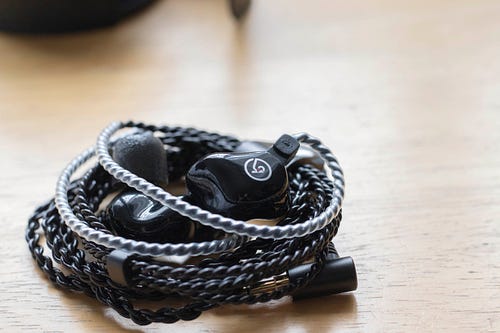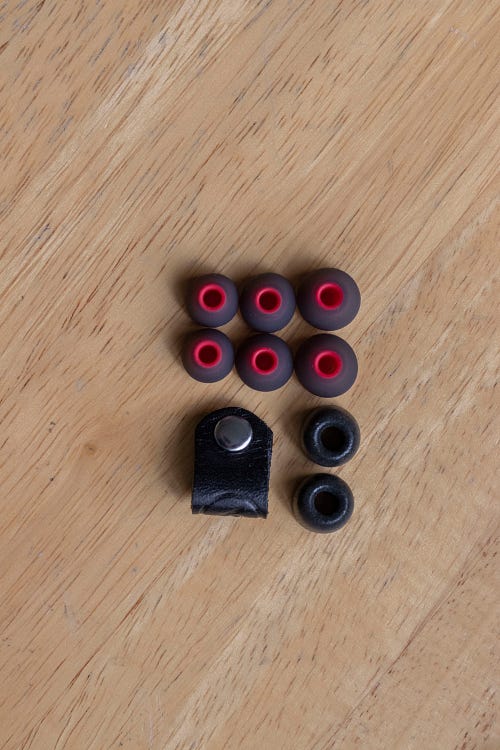With a burgeoning audio community in Singapore, Singapore-based IEM manufacturer Symphonium Audio took a leap in designing Aurora - a simple but fascinating IEM that satisfies the needs of audiophiles.
This review is originally posted on Headphonesty. I purchased this pair of in-ear monitors (IEM) at full retail price. This is not a sponsored post, but an honest review written from a consumer’s point of view. Dollar to performance ratio is included below.
Introduction
Founded in early 2015, Symphonium Audio was born out of its founders’ frustration at the current offerings in the personal audio market. They noticed an unhealthy trend; most earphones were made to be cheap and low-quality, prompting frequent replacement.
Those which sounded amazing and had better quality would often cost a bomb, rendering them inaccessible for a portion of the community.
In 2017, after months of research and design, Symphonium audio bucked the trend by creating Aurora with premium quality parts and technology often found in high-end IEMs.

Unboxing
The unboxing experience on Symphonium Audio Aurora is very pleasant - Minimalist yet satisfactory. Upon removing the cardboard packaging, you’ll see a black box with an engraved Symphonium Audio logo.

Within it lies an eye-catching leather carrying case. There is also a satin pouch which contains:


I really like the leather carrying case the IEM comes with. It is not only a perfect size for Aurora, but is made of semi-hard material, providing sufficient protection to the IEM. Those who are keen to buy it to store other IEMs will be pleased to know that Symphonium Audio sells it on its own.

Specifications
The two balanced armature drivers are embedded in a polycarbonate shell. The choice of material is wise here - Polycarbonate is light and cost-effective as compared to other materials. I think this is the main reason why Aurora sits like when a dream within my ears when I have them on.

A recessed, two-pin connector is located on top of the shell. With this implementation, many cable-rollings can be done because 2-pin cables can be easily found in the market.

The stock cable is a black, 4 twisted wire cable, making the overall presentation appear sleek. The build of the stock cable is rigid and firm, and some may find it a little stiff. But the upside is that with the correct implementation of the neck slider, microphonics are kept to a minimum when the user is walking or moving.
The Y-connector of this cable is built to be strong - very rigid. At the end of this cable is a right-angled 3.5mm with strain relief, providing durability to the user, as long as it is not handled too roughly.


The nozzle of Aurora is relatively long as compared to most of the IEMs in the market. Once you remove it from the box, you’ll find T-500 ComplyTM tips attached. There’s also a catch at the top of the nozzle preventing the ear tips from dropping. I like this implementation. After a series of testing, Final Audio Type E and SpinFit CP100 can fit pretty well with Aurora.

The shell of Aurora is relatively small as compared to other multi-drivers IEMs such as Campfire Audio or InEar, and the shape reminds me of custom IEMs (CIEM). With the correct choice of ear tips, it should offer users good noise isolation. I was able to achieve above-average isolation by using the stock silicone medium ear tips, ComplyTM T-500, and SpinFit CP100 medium ear tips.

Pairing
In this review, I chose to pair the Aurora with Sony NW-ZX2. I did some source matching and ear tips changing throughout the review. I will explain further in the next section of this review.

Sound
Symphonium Audio Aurora is a balanced IEM while touching the edge of the dark side. In fact, I think it is one of the most balanced that you’ll find within the price range of USD250-300. This surprised me because IEMs within this price range normally sounds colored, or are too musical to produce satisfying sound. Aurora is tuned using a different methodology, producing an audiophile-level IEM at a consumer price range.
The overall tonality of this IEM can be very dependant on source and ear tips. It took me a while to finalize the tonality of this IEM. I paired it with a few Digital Audio Players (DAPs) and every pairing produces different tonalities.
I found it weird at the beginning because of how different this IEM sounds when paired with different DAPs but eventually came to find the experimental process fun. With this IEM, the possibilities and permutations are endless.
The X-axis of the soundstage is sufficiently wide. I do not find any congestion within the months listening to it. For Y-axis, it might not be the deeper that can be found in the market but it is above average. The depth is sufficient to create good layering in most of the test tracks.

Lows
The lows in this IEM can be described as full and impactful. It is not the strongest and the biggest amount that you can find in the market but the presence is sufficient and significant. The dynamic in the lows fills this with emotion and life.
The response rate is sufficiently fast and the decay speed is efficient, which I really appreciate - - slow response in the lows may affect other frequency regions negatively. If you’re worried that the fast response may cause an artificial and analytical sound, you won’t have to, as Symphonium Audio managed to find the balance between the two.
Different ear tips actually offer different presentation in the lows. When I am listening using the pre-installed ComplyTM ear tips, the lows are dominant as compared to other regions in the frequency spectrum.
When I changed the ear tips to SpinFit CP100, the lows are more constrained and controlled. Personally, I prefer the lows presented when SpinFit CP100 is installed. The overall tonality is more balanced.

Mids
The mids are clear in this IEM. They are neither forward nor recessed. The positioning of mids is good in this IEM - taking center stage. The spacing is just nice for the mids to sit in without any congestion. Vocalists and other mids frequency instruments are standing in a line in the middle of the stage, bringing an enjoyable listening experience to the user.
Aurora presents male voices in a lush and warm manner giving them, extra emotion. The overall experience is very comfortable. I like the neutrality here. Some IEMs do not have sufficient emphasis in the mids, which make male vocalists sound thin. I prefer something lush and warm in the lower mids.
Aurora has a great spacing in the upper mids near to the highs. This allows it to present female voices in a silky smooth and airy manner. Jennifer Warnes and Norah Jones sounded sweet through the presentation of Aurora. The only downside is that unlike what it can do for male voices, Aurora is unable to give out a neutral sound for female voices. I suspect it is because it has slightly darker tonality. The high pitches are a little dull and I think this aspect could be further improved.

Highs
The first impression for Aurora in this frequency region is crisp and detailed. It is not sharp and piercing the eardrum. This is good news for users because sharp and piercing highs will cause listening fatigue after long hours of listening. I reviewed this IEM over a period of three weeks, and did not find any peak in the high frequency response. The overall presentation was smooth.
Unlike many other IEMs which produce unstable and ‘sparkly’ highs, the highs given out by the Aurora are pretty stable and firm. This creates a good clarity. Cymbals and strings are positioned slightly forward as compared to other instruments. The space and air in the highs are sufficient but I would appreciate more. Overall, the clarity and resolution are considerably high.

Conclusion
Symphonium Audio Aurora is a great choice for beginners starting a journey to exploring audiophile IEMs. At SGD299 (USD249), this IEM’s performance to price ratio makes it attractive. I’d suggest for those who are keen to spend some time matching the IEM with the most suitable DAPs and ear tips, based on their own needs and preferences. You’ll enjoy a high degree of versatility and freedom!
Aurora retails for SGD299 (USD249). It can be purchased at most of the major audio retailers such as ConnectIT by Jade Gift Shop (Singapore) or directly from Symphonium Audio
I would like to congratulate the team from Symphonium Audio with a loud “Mission Accomplished”.
The team understands what is lacking in the market, designing Aurora as a unique product which fills the gap - a true audiophile IEM that is reasonably priced. I am expecting more from the company in the future.
All the best and excellent work, Symphonium Audio!
This review is originally posted on Headphonesty. I purchased this pair of in-ear monitors (IEM) at full retail price. This is not a sponsored post, but an honest review written from a consumer’s point of view. Dollar to performance ratio is included below.
Introduction
Founded in early 2015, Symphonium Audio was born out of its founders’ frustration at the current offerings in the personal audio market. They noticed an unhealthy trend; most earphones were made to be cheap and low-quality, prompting frequent replacement.
Those which sounded amazing and had better quality would often cost a bomb, rendering them inaccessible for a portion of the community.
In 2017, after months of research and design, Symphonium audio bucked the trend by creating Aurora with premium quality parts and technology often found in high-end IEMs.

Unboxing
The unboxing experience on Symphonium Audio Aurora is very pleasant - Minimalist yet satisfactory. Upon removing the cardboard packaging, you’ll see a black box with an engraved Symphonium Audio logo.

Within it lies an eye-catching leather carrying case. There is also a satin pouch which contains:
- 2 pairs of ComplyTM Isolation Series T-500 (One is pre-attached)
- 3 pairs of silicone ear tips (S, M and L)
- Warranty and care booklet
- Warranty card


I really like the leather carrying case the IEM comes with. It is not only a perfect size for Aurora, but is made of semi-hard material, providing sufficient protection to the IEM. Those who are keen to buy it to store other IEMs will be pleased to know that Symphonium Audio sells it on its own.

Specifications
- Driver Configurations: Dual balanced armature drivers
- Crossover: 2-Way Passive Crossover
- Connector: Industry standard removable 2-pin connectors
- Impedance: 75 Ohms
- Sensitivity: 109dB
- Freq. Response: 10Hz – 19KHz
The two balanced armature drivers are embedded in a polycarbonate shell. The choice of material is wise here - Polycarbonate is light and cost-effective as compared to other materials. I think this is the main reason why Aurora sits like when a dream within my ears when I have them on.

A recessed, two-pin connector is located on top of the shell. With this implementation, many cable-rollings can be done because 2-pin cables can be easily found in the market.

The stock cable is a black, 4 twisted wire cable, making the overall presentation appear sleek. The build of the stock cable is rigid and firm, and some may find it a little stiff. But the upside is that with the correct implementation of the neck slider, microphonics are kept to a minimum when the user is walking or moving.
The Y-connector of this cable is built to be strong - very rigid. At the end of this cable is a right-angled 3.5mm with strain relief, providing durability to the user, as long as it is not handled too roughly.


The nozzle of Aurora is relatively long as compared to most of the IEMs in the market. Once you remove it from the box, you’ll find T-500 ComplyTM tips attached. There’s also a catch at the top of the nozzle preventing the ear tips from dropping. I like this implementation. After a series of testing, Final Audio Type E and SpinFit CP100 can fit pretty well with Aurora.

The shell of Aurora is relatively small as compared to other multi-drivers IEMs such as Campfire Audio or InEar, and the shape reminds me of custom IEMs (CIEM). With the correct choice of ear tips, it should offer users good noise isolation. I was able to achieve above-average isolation by using the stock silicone medium ear tips, ComplyTM T-500, and SpinFit CP100 medium ear tips.

Pairing
In this review, I chose to pair the Aurora with Sony NW-ZX2. I did some source matching and ear tips changing throughout the review. I will explain further in the next section of this review.

Sound
Symphonium Audio Aurora is a balanced IEM while touching the edge of the dark side. In fact, I think it is one of the most balanced that you’ll find within the price range of USD250-300. This surprised me because IEMs within this price range normally sounds colored, or are too musical to produce satisfying sound. Aurora is tuned using a different methodology, producing an audiophile-level IEM at a consumer price range.
The overall tonality of this IEM can be very dependant on source and ear tips. It took me a while to finalize the tonality of this IEM. I paired it with a few Digital Audio Players (DAPs) and every pairing produces different tonalities.
I found it weird at the beginning because of how different this IEM sounds when paired with different DAPs but eventually came to find the experimental process fun. With this IEM, the possibilities and permutations are endless.
The X-axis of the soundstage is sufficiently wide. I do not find any congestion within the months listening to it. For Y-axis, it might not be the deeper that can be found in the market but it is above average. The depth is sufficient to create good layering in most of the test tracks.

Lows
The lows in this IEM can be described as full and impactful. It is not the strongest and the biggest amount that you can find in the market but the presence is sufficient and significant. The dynamic in the lows fills this with emotion and life.
The response rate is sufficiently fast and the decay speed is efficient, which I really appreciate - - slow response in the lows may affect other frequency regions negatively. If you’re worried that the fast response may cause an artificial and analytical sound, you won’t have to, as Symphonium Audio managed to find the balance between the two.
Different ear tips actually offer different presentation in the lows. When I am listening using the pre-installed ComplyTM ear tips, the lows are dominant as compared to other regions in the frequency spectrum.
When I changed the ear tips to SpinFit CP100, the lows are more constrained and controlled. Personally, I prefer the lows presented when SpinFit CP100 is installed. The overall tonality is more balanced.

Mids
The mids are clear in this IEM. They are neither forward nor recessed. The positioning of mids is good in this IEM - taking center stage. The spacing is just nice for the mids to sit in without any congestion. Vocalists and other mids frequency instruments are standing in a line in the middle of the stage, bringing an enjoyable listening experience to the user.
Aurora presents male voices in a lush and warm manner giving them, extra emotion. The overall experience is very comfortable. I like the neutrality here. Some IEMs do not have sufficient emphasis in the mids, which make male vocalists sound thin. I prefer something lush and warm in the lower mids.
Aurora has a great spacing in the upper mids near to the highs. This allows it to present female voices in a silky smooth and airy manner. Jennifer Warnes and Norah Jones sounded sweet through the presentation of Aurora. The only downside is that unlike what it can do for male voices, Aurora is unable to give out a neutral sound for female voices. I suspect it is because it has slightly darker tonality. The high pitches are a little dull and I think this aspect could be further improved.

Highs
The first impression for Aurora in this frequency region is crisp and detailed. It is not sharp and piercing the eardrum. This is good news for users because sharp and piercing highs will cause listening fatigue after long hours of listening. I reviewed this IEM over a period of three weeks, and did not find any peak in the high frequency response. The overall presentation was smooth.
Unlike many other IEMs which produce unstable and ‘sparkly’ highs, the highs given out by the Aurora are pretty stable and firm. This creates a good clarity. Cymbals and strings are positioned slightly forward as compared to other instruments. The space and air in the highs are sufficient but I would appreciate more. Overall, the clarity and resolution are considerably high.

Conclusion
Symphonium Audio Aurora is a great choice for beginners starting a journey to exploring audiophile IEMs. At SGD299 (USD249), this IEM’s performance to price ratio makes it attractive. I’d suggest for those who are keen to spend some time matching the IEM with the most suitable DAPs and ear tips, based on their own needs and preferences. You’ll enjoy a high degree of versatility and freedom!
Aurora retails for SGD299 (USD249). It can be purchased at most of the major audio retailers such as ConnectIT by Jade Gift Shop (Singapore) or directly from Symphonium Audio
I would like to congratulate the team from Symphonium Audio with a loud “Mission Accomplished”.
The team understands what is lacking in the market, designing Aurora as a unique product which fills the gap - a true audiophile IEM that is reasonably priced. I am expecting more from the company in the future.
All the best and excellent work, Symphonium Audio!










